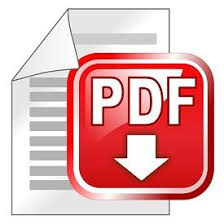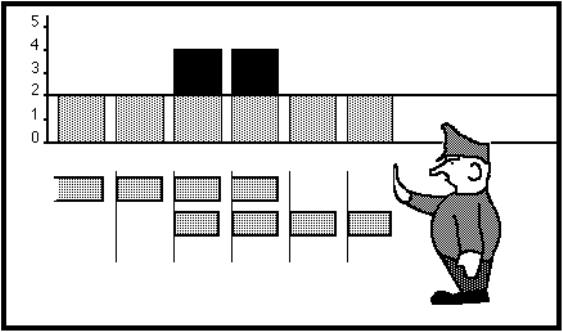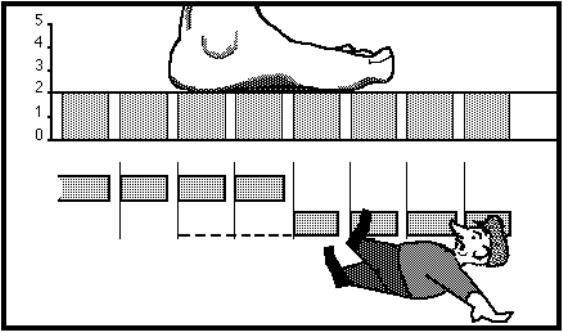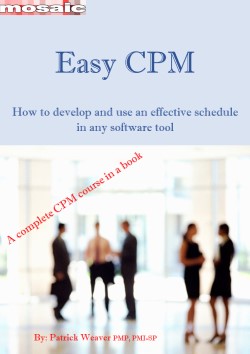Location:
PMKI > Project
Controls and Scheduling > Resource & Costs
Analysis.


- Schedule cost analysis
- Resource analysis, challenges and
opportunities
- Useful External Web-links &
Resources.
Other related sections of the PMKI:
- Schedule Development &
Time Analysis
- Reporting &
Communicating Controls Information
- Cost Management
- Earned Value Management
 Cost
is an output from project management processes, not an
input. The project budget is based on an estimate of the
total cost of all of the resources required to accomplish
the project work. The actual costs are the monies paid for
the resources actually used to accomplish the work.
Cost
is an output from project management processes, not an
input. The project budget is based on an estimate of the
total cost of all of the resources required to accomplish
the project work. The actual costs are the monies paid for
the resources actually used to accomplish the work.
The actual costs incurred are a function of the procurement processes (the agreed price paid for the resources) and how efficiently the resources have been used in performing the work. To change the cost performance of a project you need to either acquire future resources at a better price (procurement), or use the resources you have more efficiently (workforce management).
Project cost management has two distinct aspects, both of
which are important but both of which have a very
different focus:
- Cost Management is the process of planning and
controlling the budget of a project, see
more.
- Earned Value Management, which links cost and
schedule performance, see more.
 Easy
EVM is an introduction to implementing EVM in
an organization based on ISO 21508: Earned Value
Management in Project and Programme Management. Its
purpose of is to provide practical guidance to people, and
organizations, involved in either implementing an earned
value management system, or using information created by
an earned value management system.
Easy
EVM is an introduction to implementing EVM in
an organization based on ISO 21508: Earned Value
Management in Project and Programme Management. Its
purpose of is to provide practical guidance to people, and
organizations, involved in either implementing an earned
value management system, or using information created by
an earned value management system.
See more, free preview and buy ($35, immediate download).

 The
current focus of CPM scheduling on activities, sequences,
float and criticality is failing to deliver successful
project outcomes. This section looks at the approach based
on workflows and the optimization of the deployment of the
available resources; this is the underlying approach in
methodologies such as Flow-Line, ToC and Critical Chain
(although none of these methodologies use optimization).
The
current focus of CPM scheduling on activities, sequences,
float and criticality is failing to deliver successful
project outcomes. This section looks at the approach based
on workflows and the optimization of the deployment of the
available resources; this is the underlying approach in
methodologies such as Flow-Line, ToC and Critical Chain
(although none of these methodologies use optimization).
Construction project’s have shown no improvement in productivity for 40 years, the automatic resource leveling systems in most tools, most of the time, produce sub-optimal results and changing a few settings in any of the tools can produce wildly different outcomes. Current scheduling practice has clearly demonstrated that trying to predict detailed resource requirements years in advance when no-one knows who will be doing the work, how effective they will be, and frequently what the details of the work actually are, is pointless – the only use for this type of schedule is measuring failure after the event.
Unfortunately the requirement for a multi-year,
detailed, resource loaded schedule is a far too common
contractual and legal requirement. There are two solutions
to this problem discussed below, one is to move to a
proper resource optimization approach which is already
included, in part, in tools such as Spider and ALICE (see
more on scheduling tools) the second is to adopt a
more pragmatic approach to scheduling based on ‘what you
know’.
Resource Scheduling in CPM Software tools: All competent scheduling tools include resource analysis capabilities. There are three basic options for calculating the project’s resource requirements:
Resource leveling and smoothing requires the scheduling software to apply rules to smooth out resource demand. The rules may be simple - allocate scarce resource to critical activities first, or they may be embedded in a complex series of decision tables . The smoothing and leveling calculations are also affected by various settings at the schedule level and on the individual activity.
Resource optimization moves beyond simply applying rules
to calculate outcomes from a CPM schedule and makes
adjustments to the schedule changing durations, logic and
resource allocations to optimize the overall outcome. This
can be a manual process, or increasingly assisted by the
use of Artificial Intelligence (AI) built into the
scheduling software (see below).
The short-term pragmatic approach: A
realistically achievable approach in the short term, can
be summarized as ‘plan what you know and budget the rest’.
This is the approach adopted in the CIOB ‘Guide to
good practice in the management of time in Complex
Projects’. The Guide introduces the concept of
Schedule Density, an approach to resource management that
can be used with any competent CPM scheduling tool, where:
- Work more than 12 months in the future is planned at Low
Density and defines the long-term
strategic commitments of the project
- Work more than 3 months in the future is scheduled at
Medium Density and defines the tactical
approach to achieving the overall strategy
set out in the Low Density schedule
- Work in the near term is scheduled at High Density and
defines in detail who will be doing what,
where and when based on the resources
actually available and their measured productivity.
The Low Density schedule is developed and agreed with the
client and represents the contractual commitment to
deliver the project. The Medium Density schedule is
developed and agreed with the key suppliers and
subcontractors, but only for the work planned to be
accomplished in the next year or so. It defines the way
the organizations committed to the project will achieve
the strategic objectives defined in the Low Density
schedule. The High Density schedule is developed and
agreed with the people actually doing the work and should
be realistic and achievable statement of what will occur
in the next 3 months. If this does not achieve the overall
strategic objectives, the problems are resolved in the
Medium Density schedule so as to minimize disruption to
current workflows. See more on Schedule Density.
This approach is included in Chapter 4 of Easy CPM along with a range of hits and tips to get the best out of your current scheduling tools.
 Easy CPM is
a course-in-a-book that provides practical training and
guidance to individuals and organizations involved in
developing or using CPM schedules based on the Critical
Path Method (CPM). It is designed to act as both a
reference, and practice guide, for people implementing CPM
scheduling after they have learned to use the CPM
scheduling software of their choice.
Easy CPM is
a course-in-a-book that provides practical training and
guidance to individuals and organizations involved in
developing or using CPM schedules based on the Critical
Path Method (CPM). It is designed to act as both a
reference, and practice guide, for people implementing CPM
scheduling after they have learned to use the CPM
scheduling software of their choice.
See more, free preview and buy ($35, immediate download).
 A
Resource Optimization approach: Adopting a resource
optimization approach would involve changing the
underlying philosophical approach embedded in CPM from a
belief that the per-determined duration and sequencing of
activities takes precedence, constrained by the
availability of resources (if resource leveling is used);
to one that recognizes the real objective of scheduling is
to keep the resources working effectively (resource work
flows) and any activity sequencing represents a constraint
on the locations where resources can work. This change in
approach would represent a totally new paradigm in the
modern age, although interestingly, the original objective
of CPM was resource optimization!
A
Resource Optimization approach: Adopting a resource
optimization approach would involve changing the
underlying philosophical approach embedded in CPM from a
belief that the per-determined duration and sequencing of
activities takes precedence, constrained by the
availability of resources (if resource leveling is used);
to one that recognizes the real objective of scheduling is
to keep the resources working effectively (resource work
flows) and any activity sequencing represents a constraint
on the locations where resources can work. This change in
approach would represent a totally new paradigm in the
modern age, although interestingly, the original objective
of CPM was resource optimization!
CPM was dumbed down to its current form to achieve
realistic processing times on the computers available in
the late 1950s; unfortunately almost no-one has moved on
from the basic structure for a CPM model that were fully
defined by the early 1960s despite the massive advances in
computer power. Re-introducing resource optimization would
result in recognizing that:
- Activities are variable, any division of work into
activities is arbitrary and can be changed
- Durations are a consequence of both the quantity and
quality of resources actually assigned
to the work, this relationship is complex
(not simplistic resource driven durations) and capable
of optimization based on the project
objectives
- Understanding resource workflows are the core
determinant of project outcomes.
Optimizing resource workflows minimizes project cost and time outcomes. Sub-optimal or disrupted workflows increases cost and time outcomes and has been defined as a basis for claims in the SCL Delay and Disruption Protocol (see more on project cost claims). Some tools that are introducing optimization are listed in Scheduling Software and Tools.
The shift from CPM to resource optimization is a longer term option that could be as radical as the shift from bar charts to CPM. Developing this paradigm will require academic research, resulting in new approaches to software, contracts and the management of projects.
Prs: Resource optimisation - a new paradigm for project scheduling. An effective resource optimization approach would involve changing the underlying philosophical approach embedded in CPM from a belief that the predetermined duration and sequencing of activities takes precedence, to one that recognizes the real objective of scheduling is to keep the resources working effectively. The focus of this presentation is to outline the shortcomings of CPM, review the alternative methodologies and approaches including Flow-Line, ToC, Critical Chain, Momentology, Location Based Scheduling, and RD-CPM, then consider the additional requirements needed to fully implement resource optimization. The presentation looks at two alternative approaches to achieving this objective. Download the presentation.
Art: Resource Optimization. The best schedule outcome is achieved by maximizing the use of the available resources, but most scheduling tools fail to achieve this.
Note: The challenge of planning and managing resources in future projects is central to the discussion in: Future Trends in Project Controls, click through to see more.
Access the Guild of Project Controls Body of Knowledge. A suite of process-based documents which define Project Controls (membership required): http://www.planningplanet.com/guild/GPCCAR-modules